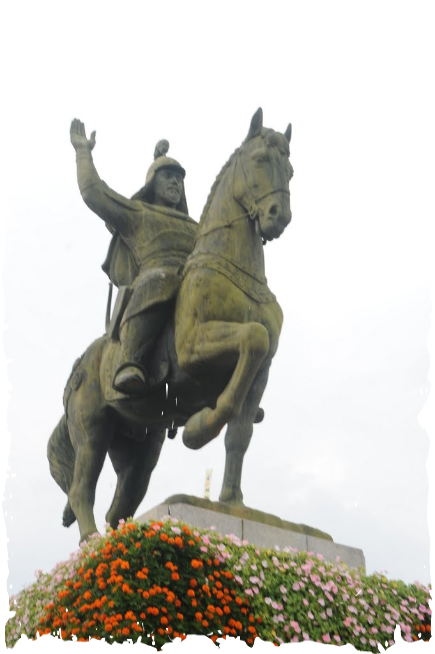Pattern History - Ge-Baek Tul
Gyebaek (died 9 July 660) was a general in the ancient Korean kingdom of Baekje during the early to mid 7th century. Little else is known of his personal life - including the year and location of his birth. In 660, Baekje was invaded by a force of 50,000 from Silla, supported by 144,000 Tang soldiers. Gyebaek, with only 5,000 troops under his command, met them in the battlefield of Hwangsanbeol. Before entering the battlefield, Gyebaek reportedly killed his wife and children to prevent the thought of them influencing his actions or causing him to falter in battle.
His forces won four initial battles, causing severe casualties to Silla forces. General GyeBaek fought very courageously and killed many Silla soldiers (Silla's commander - Kim yu Shin). However, in the end, exhausted and surrounded, Gyebaek's army was outnumbered and overwhelmed. Baekje's forces were annihilated in battle along with their leader Gyebaek.
Baekje was destroyed after 678 years of rule shortly after Gyebaek's defeat and death at Hwangsanbeol. As Neo-Confucian philosophy became more influential in the later Korean Dynasties, Gyebaek was recognized by historians and scholars as exemplifying the Confucian ideals of patriotism and devotion to his King and praised as such. Although not much else is known about Gyebaek's life, his actions leading up to his last battle are well known to many Koreans.
Ge-Baek Tul is the 12th pattern or hyeong in the International Taekwon-Do Federation form of the Korean martial art Taekwon-Do. It is part of the criteria for the 2nd Dan black belt.The diagram (I) represents his severe and strict military discipline.
His forces won four initial battles, causing severe casualties to Silla forces. General GyeBaek fought very courageously and killed many Silla soldiers (Silla's commander - Kim yu Shin). However, in the end, exhausted and surrounded, Gyebaek's army was outnumbered and overwhelmed. Baekje's forces were annihilated in battle along with their leader Gyebaek.
Baekje was destroyed after 678 years of rule shortly after Gyebaek's defeat and death at Hwangsanbeol. As Neo-Confucian philosophy became more influential in the later Korean Dynasties, Gyebaek was recognized by historians and scholars as exemplifying the Confucian ideals of patriotism and devotion to his King and praised as such. Although not much else is known about Gyebaek's life, his actions leading up to his last battle are well known to many Koreans.
Ge-Baek Tul is the 12th pattern or hyeong in the International Taekwon-Do Federation form of the Korean martial art Taekwon-Do. It is part of the criteria for the 2nd Dan black belt.The diagram (I) represents his severe and strict military discipline.
"I would rather die than be a slave to the enemy" - General Ge-Baek

Above: Mr. Raukura and Mr. Doogan (centre) - training with TUL Tour participants at the main Temple and Palace Complex, Buyeo, South Korea.

Above and below: Statue of General Ge-Baek at Buyeo, South Korea.


Above: Mr. Raukura and Mr. Doogan at Buyeo, the capital city of the ancient Baekje Kingdom.


